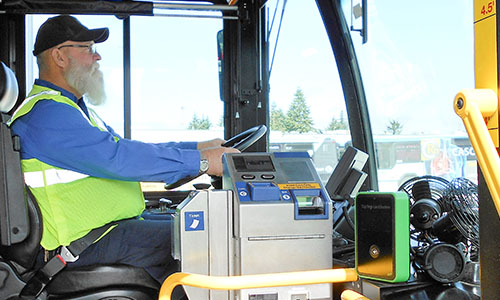

With the LECIP central system, municipal leaders can easily manage cash payments to make them more convenient, easier to use, and safer for residents and travelers alike.

Central system users can manage field devices, including fareboxes and vaults, with ease. The central system automatically detects connected devices and device assignment. For instance, when a farebox is removed from Bus A and installed on Bus B, the central system automatically detects the change and updates the device inventory automatically as long as the correct information is input into the farebox.
The central system also captures key statuses (e.g., cashbox door open) of the farebox in near real time if the farebox uses a cellular network to communicate with this central system, and such statuses are visible on the central system web portal.
The system provides fast and stable farebox configuration distribution. The farebox regularly interrogates the central system for updates, which are immediately downloaded to the farebox if any updates are available. Each farebox configuration comes with an activation date on which the farebox will deploy the new configuration. Transit authorities can distribute a new fare set or other changes that need to be deployed on a specific date well in advance.
The distribution function also supports the test distribution of a new configuration. Using the test distribution, a newly made configuration can be distributed only to a small number of fareboxes/buses so that this new configuration can be tested.
The LECIP central system supports multi-level report generation and flexible data formatting. Reporting functions include revenue, ridership, maintenance, operation, diagnostics, driver key, security, and unclassified revenue reports. All data can be manipulated using any ODBC-compliant third-party tool or loaded into the data warehouse. Users can freely design their own reports, and user email reports can also be set up. In addition, reports can be viewed via email without having to enter the system.

The central system has a cash audit function where users can compare the amount of cash validated by fareboxes and the amount of cash collected by the authority; a cash audit can be carried out on a cashbox or a vault. The variance in reconciliation is typically less than 0.5%.
The system uses a wide variety of functions intuitively to support the creation and distribution of files to devices in one workflow with user-managed controls. It employs at-a-glance iconization, making it easy to find functions and operations and recognize their status. The LECIP central system provides customers with real-time and accurate operational results by ensuring stable system operation at all times in line with operations.
The central system contains six core modules, including a reports module backed up by the Tableau BI tool, which allows for the complete management of fare payment system reporting.
LECIP's central system web portal is a web application that users can access through a web browser. No special applications are required. The customer only needs a desktop computer connected to the Internet.

Clark County Public Transportation Benefit Area Authority

Rogue Valley Transportation District

Beloit Transit System

North County Transit District


Copyright © LECIP INC.